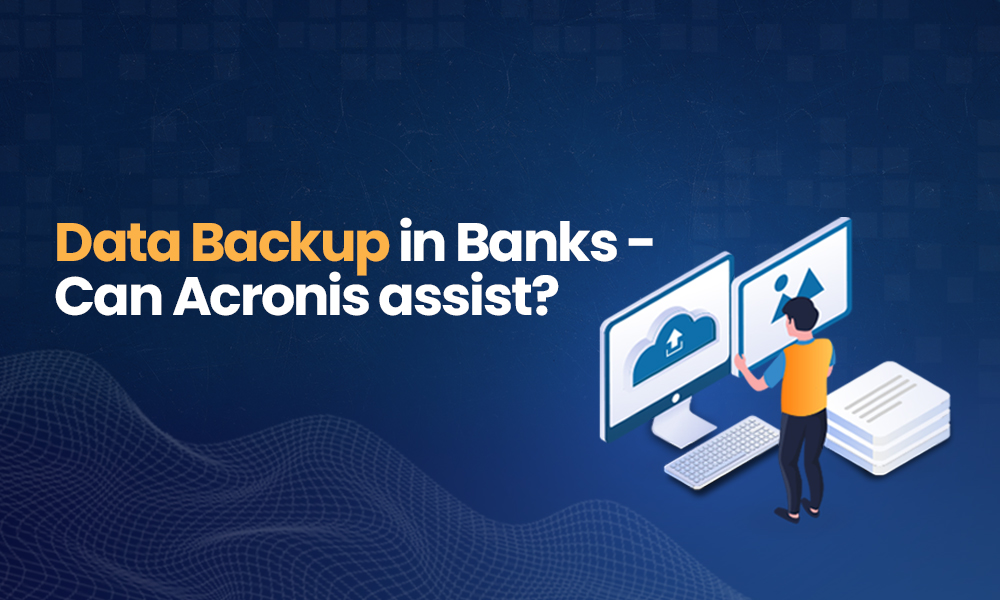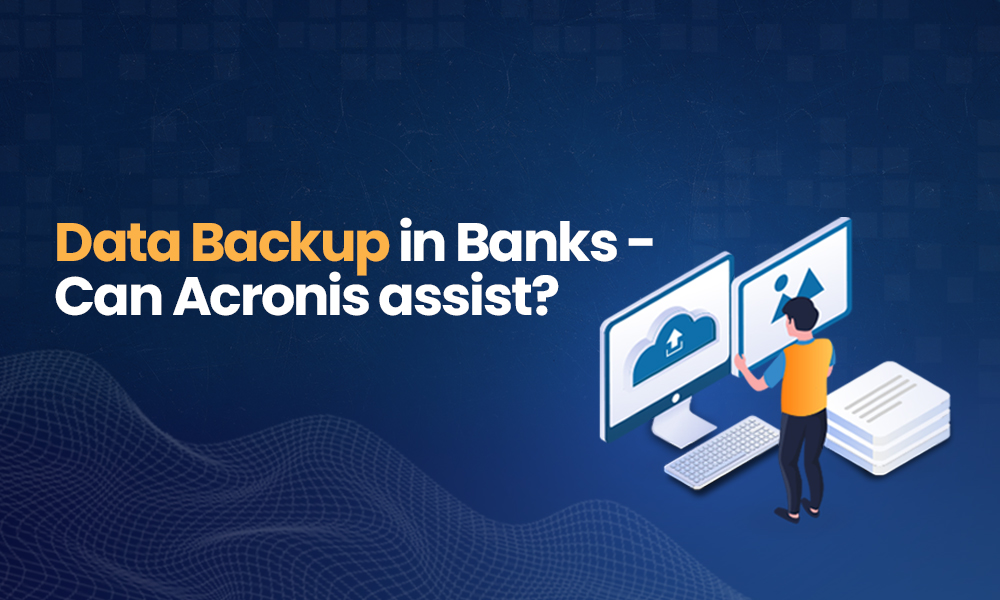
Data loss can be a terrifying experience for everyone. What if the disaster occurs in a bank? That may be an incomprehensible loss. The majority of organisations around the world have been searching for years to prevent such a catastrophe. With the advent of AI, the rate at which lost data may be recovered has become exceedingly difficult. In order to avert the unthinkable, disaster recovery software has been developed by programmers. Acronis is a catastrophe recovery solution that most businesses rely on.
Now, in the case of a bank where multiple individuals’ personal and financial information is stored, its management must be vital for its safety. The backup and disaster recovery plan focuses on quickly restoring mission-critical bank operations and services. Banks may be required to comply to a set of standards and best practises under the plan in order to achieve a successful recovery. Any backup and disaster recovery plan must contain a well-structured method for guiding IT administrators through the process of restoring regular data access. Acronis plays a significant role in safeguarding the data in this instance.

In the event of a cyber-attack, hardware failure, power or network outage, or human mistake, a bank’s capacity to function regularly and recover from these crises is contingent on the existence of a comprehensive backup and disaster recovery plan. It is common knowledge that the banking business today prioritises internet interactions. Compliance and customer service considerations have made data management a must. Financial institutions of all sizes must prioritise and plan for efficient and rapid disaster recovery in order to retain compliance, minimise downtime, and, most importantly, continue to meet the demands of their customers during and after a disaster or disruptive event.
Operating a secondary datacenter from scratch is prohibitively expensive for the vast majority of businesses. Cloud and on-premises data recovery options are the only viable alternatives for small and medium-sized enterprises. Nevertheless, if you desire safety, dependability, and a solid return on your investment, which option should you choose? As data growth increases data complexity and company value, the implementation of a cloud-based disaster recovery solution is becoming more widespread. In the data-driven financial industry of the present day, on-premises, secondary datacenter, and cloud data disaster recovery options are all viable. The cloud recovery option has various benefits that are not available to all sizes of organisations.
Even though it is a statutory requirement for banks, many CIOs view disaster recovery as insurance. But the usefulness of data backup and recovery extends beyond disaster prevention. Even the loss of a single server can have a disastrous effect on a company’s capacity to function, leading to dissatisfied customers and a decline in revenue. It is therefore essential to routinely back up your data. As they allow any server to be accessed and run temporarily in a secure environment and backup data to be retrieved on the road, cloud backups are particularly useful for addressing these minor hiccups.
Acronis Cloud data recovery provides a scalable, adaptable, and cost-effective option for your institution’s disaster recovery plan. Acronis True Image is used for rapid fixes. This enables many organizations to reboot its servers and get them back online within seven minutes, and to recover a complete server in 15 minutes from a bare metal restore situation.
In conclusion, as the significance of digital channels continues to rise, the difficulties of handling and keeping data in the financial sector will only increase. Cloud data recovery is a scalable, customizable, and cost-effective disaster recovery approach that can benefit your firm.
